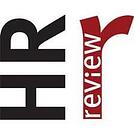Originally featured on HR Review.

MOVE Guides recently hosted an event at our London office to bring the best and brightest from the mobility world together.
Joining me on an interactive panel about “The Future of Global Mobility” were industry experts from King.com, PwC and Re:Locate magazine. We discussed the incredible growth of the global mobility industry and what technology solutions are needed to support it and make it go mainstream.
All the panelists agreed that global mobility is not only growing in importance within HR, it is also becoming core to business success for the 21st century organization. It helps build a pipeline of global leaders (1/3rd of S&P 500 CFOs have international experience-Korn/Ferry), it helps retain and engage millennial staff (71 percent of millennials expect to live and work abroad-PwC) and it helps fill talent gaps (63 percent of CEOs are concerned about the availability of key skills in their local markets-PwC). These factors foster strong global brands, empower global teams and grow global revenue.
Our panel also pondered, given that HR technology is such a hot button topic, why does talent mobility continue to remain absent from the conversation?
Large incumbent global mobility outsourcers have done little to introduce enterprise technology applications and are hesitant to disassemble their own complex and opaque business models. Traditional HCM vendors are also noticeably absent from the global mobility market because they lack the expertise in payments, tax, supply chain management and employee move support to create what global mobility teams need for success.
Last year, MOVE Guides conducted a survey with the RES Forum of more than 80 multinational companies which showed that only 18 percent of employees were satisfied with their global mobility programs while the majority of respondents considered global mobility to be one of the most complex areas of HR disciplines.
Additionally, while technology is playing a huge role in improving efficiency, lowering costs and driving success, our joint research showed that almost 72 percent of companies don’t use cloud technology for talent mobility and 43% don’t use any technology solution.
All these factors combined – a large and growing market, frustrated employees and complex manual processes – leads to a perfect opportunity for enterprise technology disruption.
Delivering a successful global mobility program requires configuring HR processes, helping employees organize their relocation, sourcing and managing a large supply chain of global vendors such as shipping, housing, immigration and coordinating payments to these global vendors. Building a successful enterprise application requires mapping this complexity into a data model, bringing together these components, and building simple experiences for the different users — HR, global mobility, employees, families, finance and vendors.
To make it even more complex, it also involves building scalable configuration and permissions for different global mobility programs and policies; building integrations with a supply chain that have many categories and virtually no APIs or integration experience; and blending a beautiful technology solution with offline support for the counselling and escalations that invariably happen in an international move.
Now you may start to realize why a $150bn industry with no technology innovation has 18% satisfaction and the highest complexity rating.
During the panel, I explained my vision for bringing technology innovation to global mobility with MOVE Guides. Similar to Lego blocks, mobility needs to be built into a single structure, with each block representing the different segments of a global mobility program. But today, it looks more like a five-year-old spilling Lego blocks across the floor.
There are independent systems to manage HR processes, for example tools to estimate the cost of a move; there are many suppliers who perform services for employees and hold data about it; there are many different places where an employee consumes information while planning a move; and there are different payment gateways, payroll systems, cost of living information and much more.
To make a successful global mobility system for companies, employees and global vendors, we must put all of these global mobility Lego blocks together — one by one — into a single mobility view. This is also the vision behind MOVE Guides’ technology solution, the Talent Mobility Cloud.
We believe it is finally time for global mobility to have access to the same technology solutions that other key business functions already benefit from today. When this occurs, the global mobility team will be able to transform a company’s global reach and overall success.